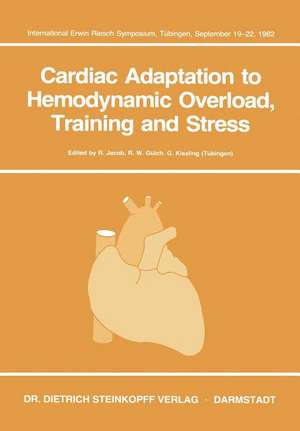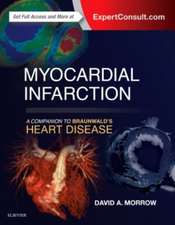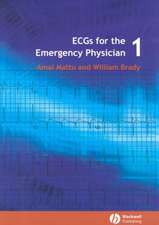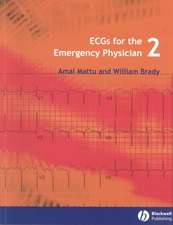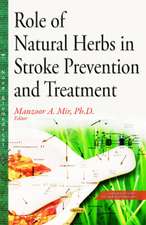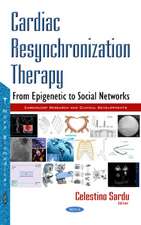Cardiac Adaptation to Hemodynamic Overload, Training and Stress
Editat de R. Jacob, R. Gülch, G. Kisslingen Limba Engleză Paperback – 25 dec 2011
Preț: 1101.94 lei
Preț vechi: 1159.94 lei
-5% Nou
Puncte Express: 1653
Preț estimativ în valută:
210.85€ • 220.15$ • 174.51£
210.85€ • 220.15$ • 174.51£
Carte tipărită la comandă
Livrare economică 04-18 aprilie
Preluare comenzi: 021 569.72.76
Specificații
ISBN-13: 9783642853289
ISBN-10: 3642853285
Pagini: 384
Ilustrații: 373 p.
Dimensiuni: 170 x 244 x 25 mm
Greutate: 0.61 kg
Ediția:Softcover reprint of the original 1st ed. 1983
Editura: Steinkopff
Colecția Steinkopff
Locul publicării:Heidelberg, Germany
ISBN-10: 3642853285
Pagini: 384
Ilustrații: 373 p.
Dimensiuni: 170 x 244 x 25 mm
Greutate: 0.61 kg
Ediția:Softcover reprint of the original 1st ed. 1983
Editura: Steinkopff
Colecția Steinkopff
Locul publicării:Heidelberg, Germany
Public țintă
Professional/practitionerCuprins
Editorial.- Chronic reactions of myocardium at the myofibrillar level. Reflexions on “adaptation” and “disease” based on the biology of long-term cardiac overload.- Fundamental biochemical processes — Control of myocardial cell growth and gene expression.- Molecular dynamics of contraction — relaxation.- Effects of activity on some physiological properties of skeletal muscles.- Relationship between the synthesis rates and mRNA levels af the ? and ? cardiac myosin heavy chains in normal and thyrotoxic rabbits.- Dissociation between factors resulting in hypertrophy and changes in myosin isoenzyme population of the pressure-loaded rat heart.- Dissociation of hypertrophy and altered function in senescent rat myocardium.- Differential effect of thyroid hormones on catecholamine enzymes and myosin isoenzymes in ventricles and atria of the rat heart.- The adrenals in experimental cardiac hypertrophy.- Myocardial nucleus in growing and hypertrophied heart.- A pathomorphological study on the diabetogenic drug induced heart disease in the rat.- The role of cyclic nucleotides in the pathogenesis of myocardial hypertrophy.- The role of cytoplasmic factors in RNA synthesis activation during hyper-function of heart and liver.- New trends in biology of cardiac overload: plasma membranes, enzymes, cytoskeleton proteins and in vitro traduction of RNA.- Structural changes of contractile proteins.- Adaptive changes in cardiac isomyosins as visualized by immunofluorescence.- Myosin isoenzymic distribution in hypertrophied rat and human hearts.- Thyroxine-induced molecular alteration of heavy and 27,000-dalton light chains of rabbit ventricular myosin. Reconstitution of heavy and light chain molecules of subfragment-1 isozymes of cardiac myosin.- Structural variants of heavyand light chains of atrial and ventricular myosins in hypertrophied human hearts.- Myosin isozymes in normal and pathological human cardiac muscle.- Structural and enzymatic alterations of cardiac contractile proteins under chronic pressure overload.- The phosphorylation of cardiac contractile proteins.- Morphological and functional aspects of adaptation or damage.- Isoenzyme contribution to economy of contraction and relaxation in normal and hypertrophied hearts.- Heat liberation in experimentally induced tetanic contractions of myocardium from normal and Goldblatt rats.- Energetics of the rat heart in chronic pressure overload.- Alterations in electrical properties of rat myocardium accompanying different models of cardiac hypertrophy.- Calcium binding and Na-Ca exchange in cardiac sarcolemma in experimental hypertension.- Cardiac muscle function during the development of hypertrophy in pigs due to pressure overload.- Biochemical and mechanical correlates at peak systole in myopathic Syrian Hamster.- Buffer capacity of the myocardium after swimming training.- Coronary circulation, ischemia, adenine nucleotide content in cardiac overload.- Coronary reserve in spontaneously hypertensive rats: the effect of blood pressure, hypertrophy and long-term vasodilator therapy.- Effect of aortic constriction on rat heart function and mortality.- Metabolic effects of low-flow ischemia on the perfused hypertrophied rat heart: a phosphorus (31P) nuclear magnetic resonance (NMR) study.- Myocardial mechanics of infarcted and hypertrophied non-infarcted myocardium following experimental coronary artery occlusion.- The interference of respiratory chain function with lipid metabolism in the left ventricular myocardium of rats with compensated chronical volume overload.- Neuroendocrine,cardiac and vascular alterations in hypertension and stress — Pathogenesis, and effects of interventions.- Cardiovascular abnormalities in spontaneously hypertensive rats. Causes or consequences of the increased blood pressure?.- Mechanisms of heart sarcolplasmic reticulum damage under stress.- Changes of heart catecholamine levels, metabolism and adrenergic receptors in actually and repeatedly stressed rats.- Modulation of catecholamine synthesizing and degrading enzymes by swimming and emotional excitation in the rat.- Blood pressure and cardiac myosin heterogeneity in the rat as influenced by swimming and emotional excitation.- Calcium-Antagonism: A new therapeutic access to hypertensive heart disease.- Magnesium as the physiologic calcium antagonist: its vascular effects and therapeutic use.- Reactions at the tissue level.- Effects of hemodynamic load on myocardial fibre orientation.- Biochemical characteristics and cellular mechanisms of fibrotic processes.- Cardiovascular aging.- Connective tissue alterations in coronary arteries of spontaneously hypertensive rats (SHR); electron microscopic and morphometrical investigation.- Myocardial mass and collagen content in Crotalaria spectabilis-induced pulmonary hypertension of young and adult rats.- Heterogeneity of collagen in the normal and hypertrophied left ventricle of the rat.- Determination of left ventricular diastolic wall stress and elasticity in situ. A methodological investigation.- The influence of antihypertensive treatment on left ventricular compliance and myocardial stiffness.- Acknowledgements.- Authors’ Index.
